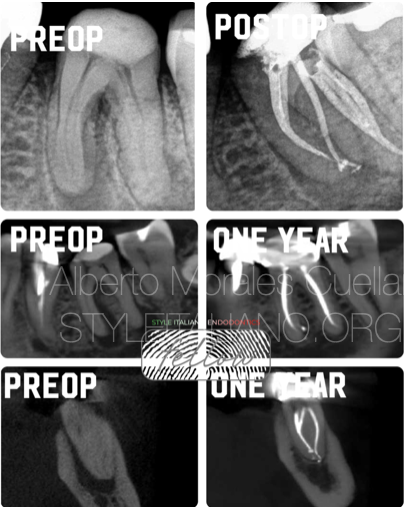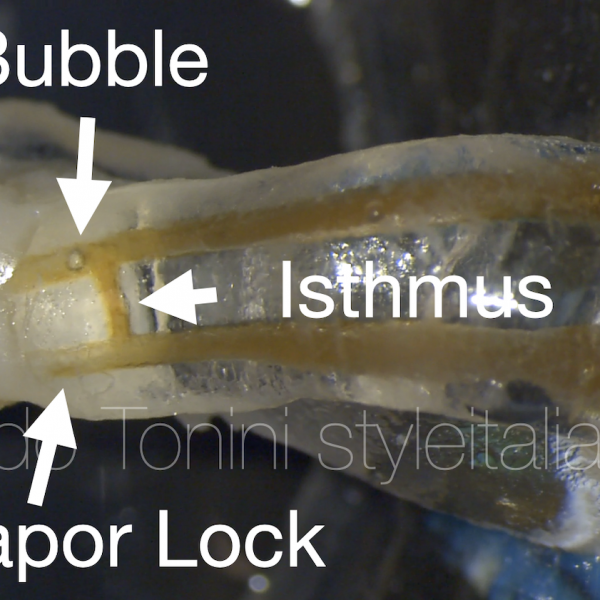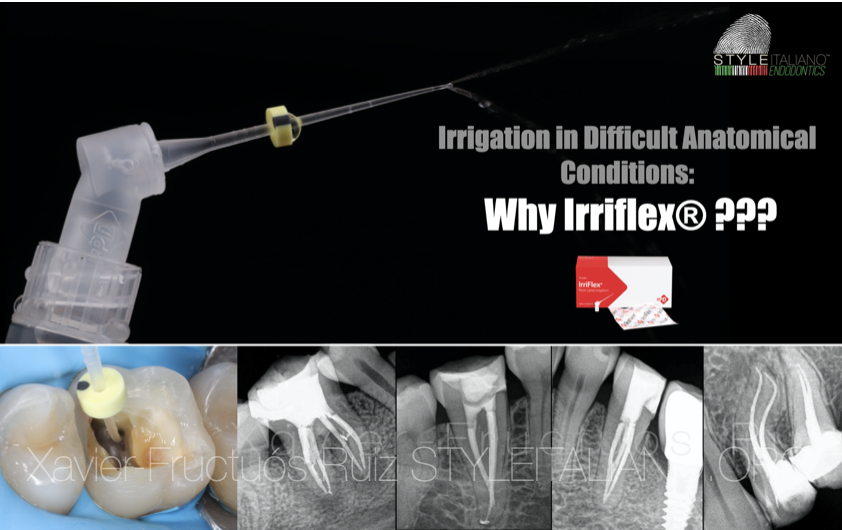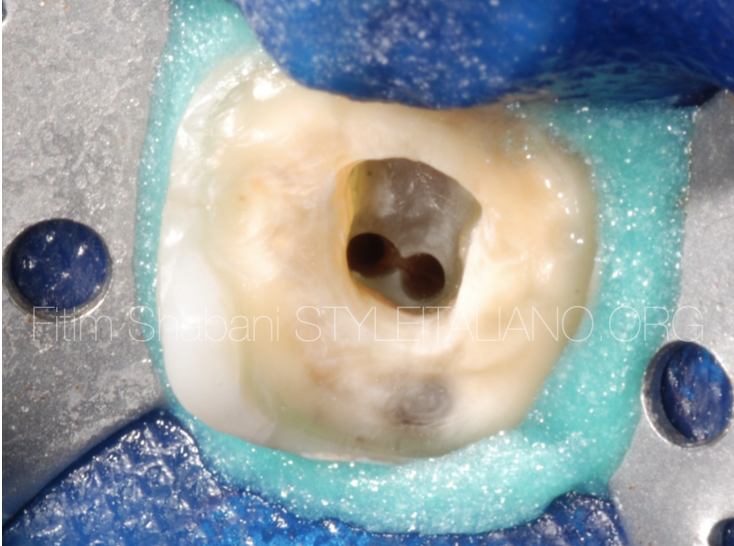
Intracanal aspiration, an useful tool
22/01/2024
Fellow
Warning: Undefined variable $post in /var/www/vhosts/styleitaliano-endodontics.org/endodontics.styleitaliano.org/wp-content/plugins/oxygen/component-framework/components/classes/code-block.class.php(133) : eval()'d code on line 2
Warning: Attempt to read property "ID" on null in /var/www/vhosts/styleitaliano-endodontics.org/endodontics.styleitaliano.org/wp-content/plugins/oxygen/component-framework/components/classes/code-block.class.php(133) : eval()'d code on line 2
The use of intracanal aspiration can be useful in many situations during root canal treatment.
During the irrigation protocol we can use different irrigants (NaOCl, EDTA, Citric Acid...) to prevent the irrigants from mixing with each other, intracanal aspiration speeds up the drying process.
Another use during the irrigation protocol is to perform negative pressure irrigation, very useful in cases in which we know that the canals are connected by isthmuses or confluent canals.
We place the aspiration cannula in one canal and irrigate through the other, creating a flow of irrigants between both canals that helps us penetrate the irrigants into areas that are difficult to access.
In the case of very wide canals, such as some immature upper central incisors, we can use it to irrigate with negative apical pressure, bringing the hypochlorite to the working length without risk of extrusion.
It can also be useful to remove materials that we can find inside the ducts.
During surgical endodontic treatment, we can also use them to keep the surgical area dry, sometimes we can even insert it into the retropreparation to dry the canal.
On the market, there are some systems for this, such as the macrocannula of the Endovac system, the Endoaspirator Pro, etc.
We can also use an Irriflex irrigation tip, cutting the last millimeters of the tip, so that it does not become obstructed when aspirating, and with a connector, adapt it to the aspiration system.
In the next molar, MB1 and MB2 are independent, but they have a communicating canal between them, through which the flow of irrigants is created with negative pressure
It can also be useful in mesial roots of lower molars, since many times both canals are connected by isthmuses.

Fig. 1
X-rays and CBCT of the previous case.
In cases with drainage of the periapical tissues, the use of an aspiration cannula helps us facilitate the drainage of the contents of the lesion.
Lower incisor with suppuration after initial access.
Upper incisor with suppuration after accessing the interior of the canal.
In the following video, of an upper molar, where MB1 and MB2 join to separate again apically, you can see how we use the microcannula to aspirate while irrigating through the other confluent canal, creating a flow of irrigants between canals.
Lower molar after filling and negative pressure irrigation of the medial root.
In this video, you can see how, with the microcannula, we aspirate a piece of file that had previously entered the palatal canal when trying to remove it.
In the following video, we can see how we dry the canal from the apical side with the microcannula during a surgical endodontic retreatment.
In an incisor with an immature apex, we can aspirate with the microcannula from the apical area (irrigation by negative apical pressure), allowing the irrigants to be brought to the apical area without risk of extrusion.

Fig. 2
About the author:
Alberto Morales Cuellar
Degree in dentistry at the Complutense University of Madrid, 2013
Master in Advanced Endodontics at Rey Juan Carlos University, 2017
Master Periodontics and soft tissue management at CEU Cardenal Herrera, 2020
Professor of Master of Microscopic Endodontics and Apical Surgery (URJC)
Opinion leader of Zarc4Endo
Style Italiano Endodontics Fellow member
Full member of the Spanish Association of Endodontics.
Member of the American Association of Endodontists.
Winner of the Best Training Presentation of the College of Dentists of Madrid
Conclusions
The use of a small cannula, which allows us to insert it into the canal, and which is connected to the suction of the equipment, can be very useful during different steps of the endodontic treatment.
Facilitating different processes, such as irrigation with negative pressure and speeding up other processes, such as drying the canals during the irrigation phase.
Bibliography
Widjiastuti I, Rudyanto D, Yuanita T, Bramantoro T, Aries Widodo W. Cleaning Efficacy of Root Canal Irrigation with Positive and Negative Pressure System. Iran Endod J. 2018 Summer;13(3):398-402. doi: 10.22037/iej.v13i3.20875. PMID: 30083214; PMCID: PMC6064011.
Jamleh A, Fukumoto Y, Takatomo Y, Kobayashi C, Suda H, Adorno CG. A comparison between two negative pressure irrigation techniques in simulated immature tooth: an ex vivo study. Clin Oral Investig. 2016 Jan;20(1):125-31. doi: 10.1007/s00784-015-1489-1. Epub 2015 May 13. PMID: 25963721.
Fukumoto Y, Kikuchi I, Yoshioka T, Kobayashi C, Suda H. An ex vivo evaluation of a new root canal irrigation technique with intracanal aspiration. Int Endod J. 2006 Feb;39(2):93-9. doi: 10.1111/j.1365-2591.2006.01050.x. PMID: 16454788.
Haapasalo M, Shen Y, Wang Z, Gao Y. Irrigation in endodontics. Br Dent J. 2014 Mar;216(6):299-303. doi: 10.1038/sj.bdj.2014.204. PMID: 24651335.
Regan JD, Fleury AA. Irrigants in non-surgical endodontic treatment. J Ir Dent Assoc. 2006 Autumn;52(2):84-92. PMID: 16989370.






